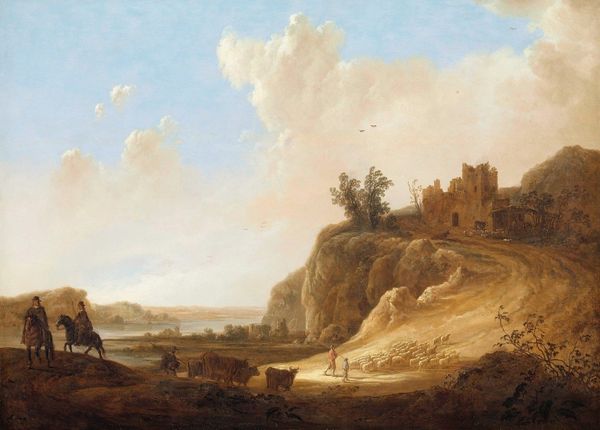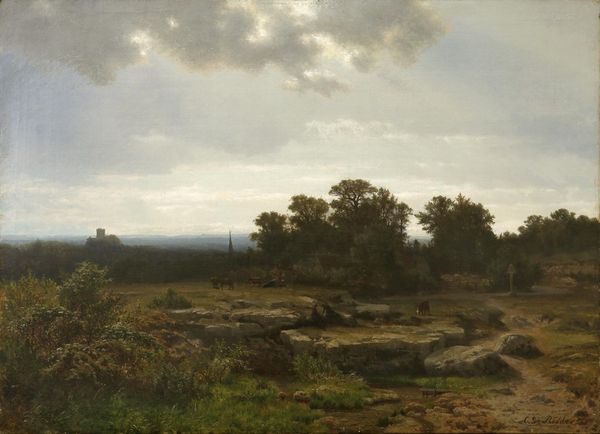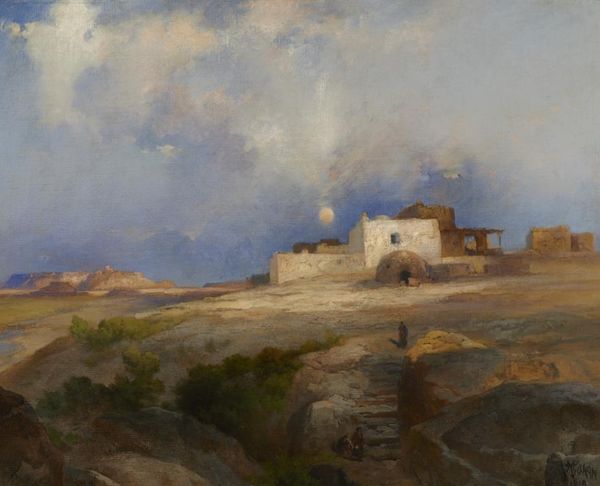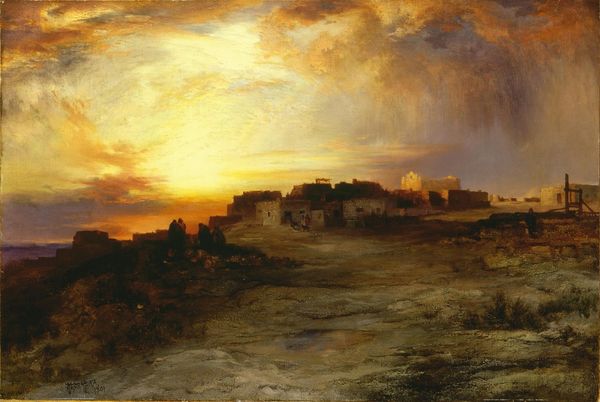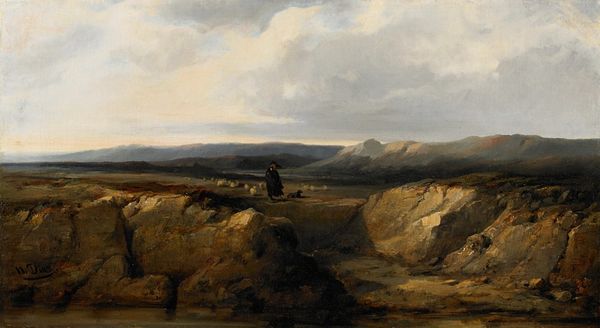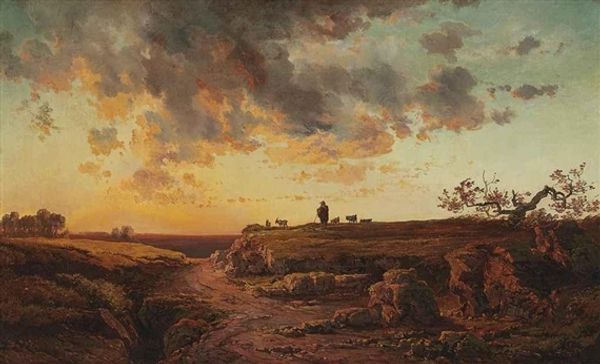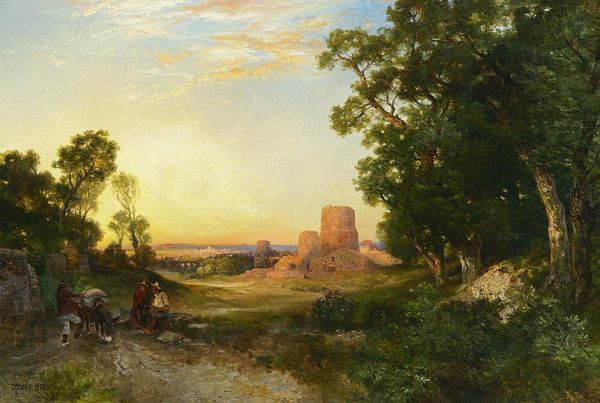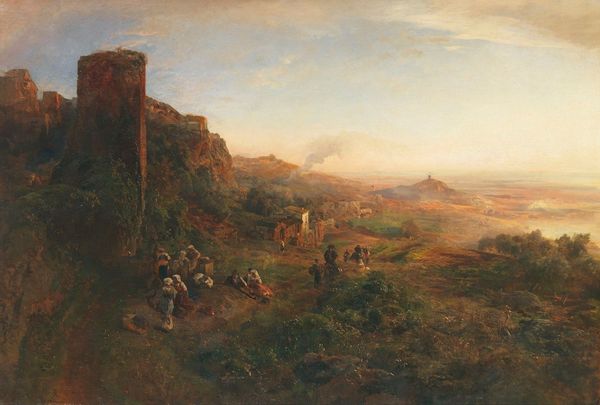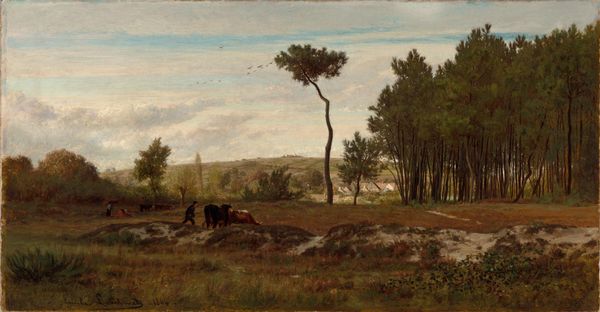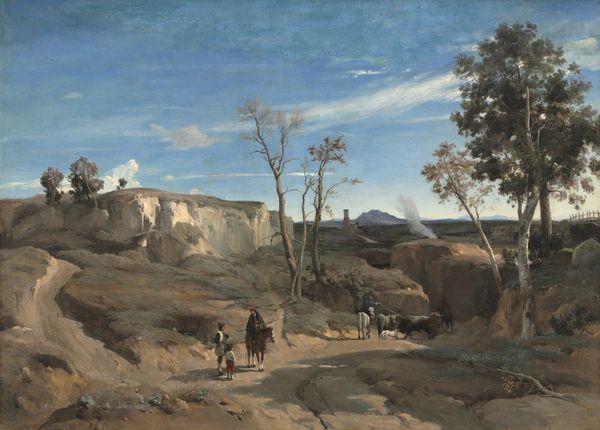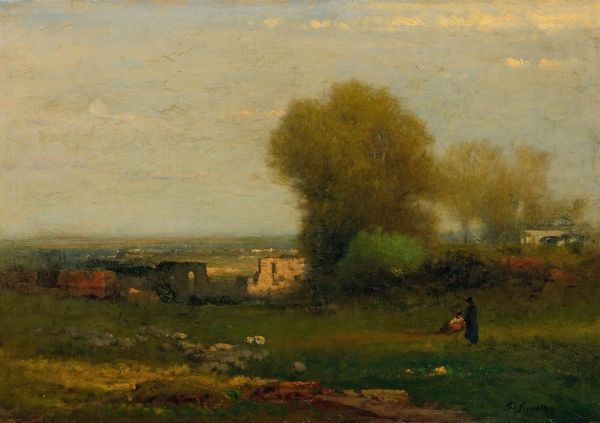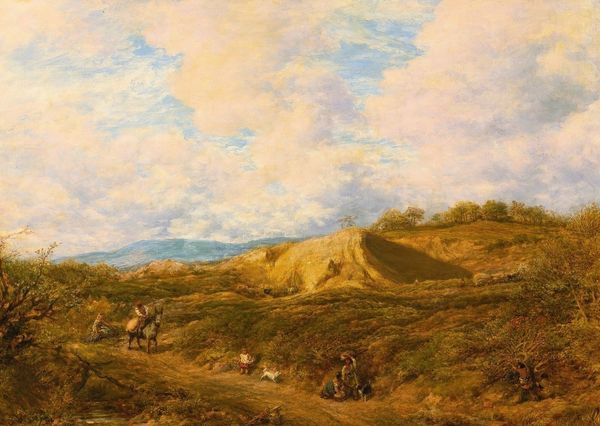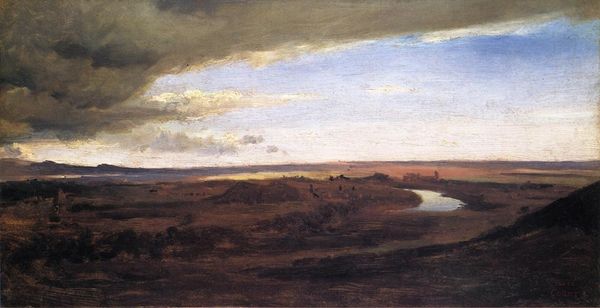
oil-paint
#
oil-paint
#
landscape
#
charcoal drawing
#
figuration
#
oil painting
#
romanticism
#
genre-painting
#
charcoal
#
watercolor
Copyright: Public Domain: Artvee
Oswald Achenbach painted this landscape with a wandering monk. The dark-robed figure, set against the vastness of the landscape, immediately evokes a sense of spiritual seeking or solitude. The motif of the wandering monk stretches back centuries, appearing in numerous religious and artistic traditions. We see echoes of this figure in the medieval anchorites, desert fathers, and even the Romantic wanderers of the 19th century, each embodying a journey—physical, spiritual, or both. Take Caspar David Friedrich’s "Wanderer Above the Sea of Fog," where the solitary figure gazes into the abyss, mirroring the monk’s introspective stance here. Consider, too, how the landscape itself becomes a stage for this inner drama, a reflection of the monk’s emotional state. The approaching storm clouds perhaps symbolize inner turmoil, while the distant monastery represents hope or resolution. Such visual metaphors are a potent means of engaging viewers on a deep, subconscious level, tapping into our shared understanding of nature as a mirror of the soul. The journey continues, always reshaping itself, as humans continue to explore and visually express themselves.
Comments
No comments
Be the first to comment and join the conversation on the ultimate creative platform.
